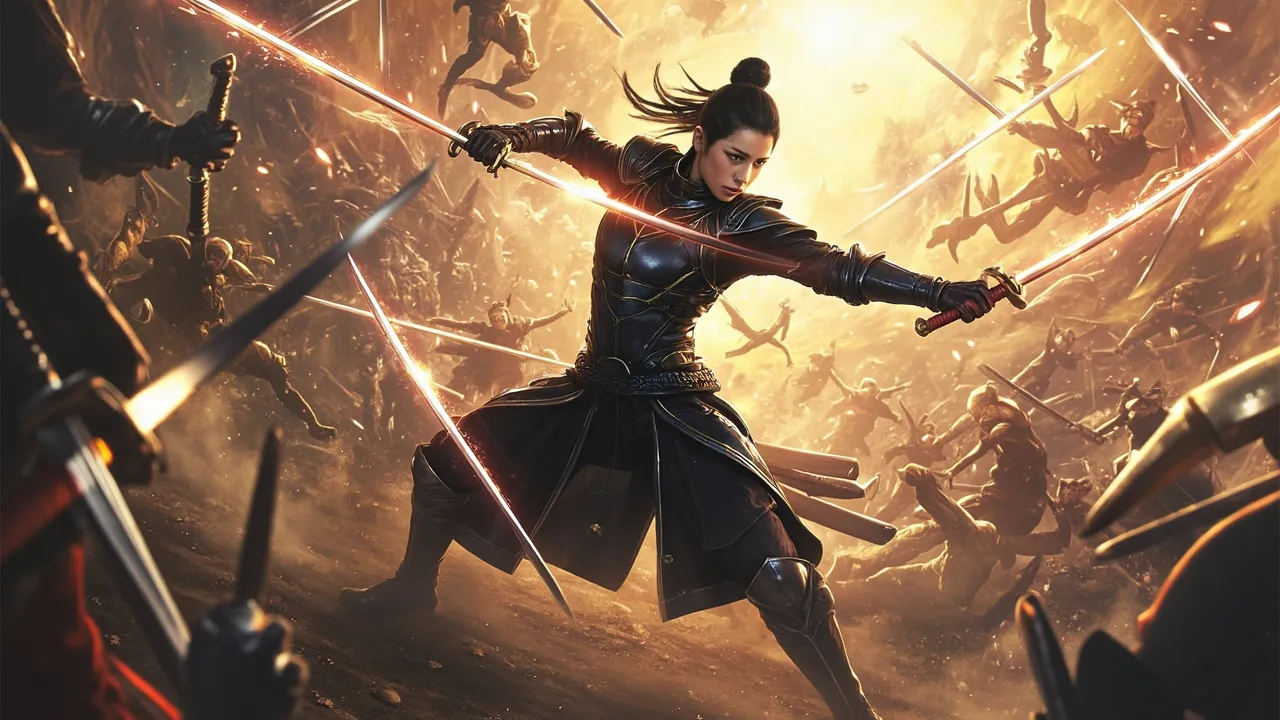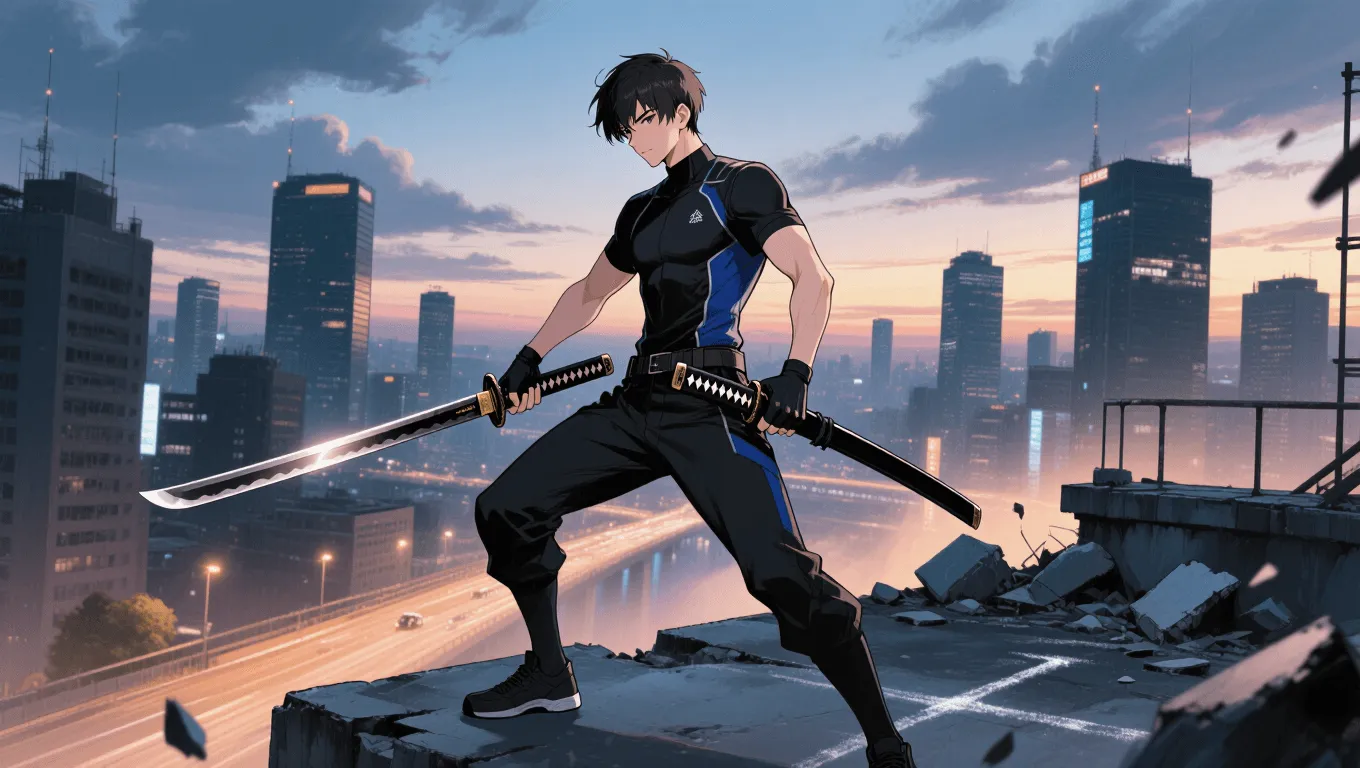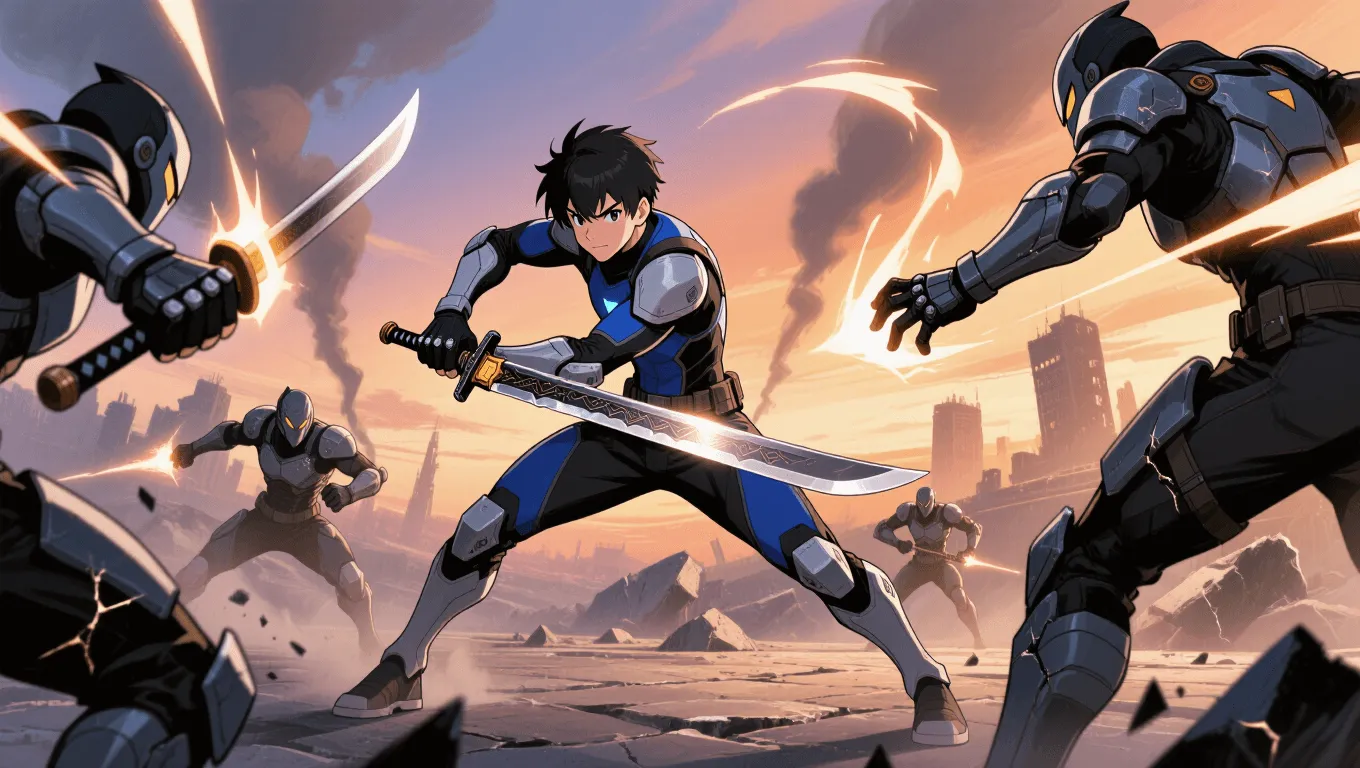Sword Mastery

Sword Mastery Video Demo 🎬
Table of Contents
Sword mastery is the superpower of complete command over bladed combat—fusing swordsmanship, timing, precision, and tactical awareness into one seamless art. As a blademaster advances, they wield katanas, longswords, rapiers, and sabres with flawless edge alignment, perfect point control, and footwork that controls space. This guide explores how sword mastery works, what it excels at, and where it struggles. For more powers like this, explore the full catalog in the superpower wiki or spark ideas with the random superpower generator.
What Is Sword Mastery
Sword mastery is a heightened, often superhuman level of proficiency with swords. It goes beyond training and muscle memory to deliver intuitive reading of distance (maai), tempo, intent, and angles. The user isn’t just “good with a sword”; they consistently choose the right technique at the right moment—whether that means a thrust through a narrow seam in armor, a diagonal cut that compromises balance, or a quick hilt strike to the jaw at close quarters.
This mastery spans multiple schools and traditions—kenjutsu, kendo, historical European martial arts (HEMA), classical fencing, and modern combatives—and merges them into a unified system. The result is unmatched efficiency: minimal extraneous motion, precise blade paths, and a calm center from which to launch decisive actions.
Core Abilities of Sword Mastery
Edge Alignment and Point Control
At the heart of all clean cuts is edge alignment. A master keeps the blade’s edge oriented through impact, preventing energy loss and chipping while maximizing penetration. Point control enables surgical thrusts into small targets—visor slits, armpits, throat lines, or gaps between plates.
Measure, Footwork, and Angle Control
Sword mastery dominates distance. By gliding between ranges and adjusting stance on micro-beats, the user attacks without being hit and retreats without ceding initiative. Triangular steps, lateral sidesteps, and sharp pivots create flanking angles that turn an opponent’s guard.
Guard Literacy and Transitions
From high guards to low guards, from hanging to back-weighted stances, transitions are fluid and purposeful. The master uses guards as loaded positions: a high guard to threaten descending cuts, a hanging guard to bait and deflect, a low guard to invite overreach and counter.
Bind, Parry, Beat, and Riposte
Contact with the opponent’s blade (the bind) is an information-rich moment. A master reads pressure—strong versus weak—and manipulates it with beats, rolls, and winding actions. Parries are economical; ripostes arrive as the opponent’s line collapses, often before they’ve recognized the opening.
Tempo Manipulation and Feints
Time is a weapon. The user shapes the rhythm of the exchange with feints, delayed cuts, half-commitments, and sudden accelerations. These choices provoke premature blocks, widen defensive gaps, and set up guaranteed hits.
Multi-Weapon Versatility
A rapier favors thrusting with lunges and disengages; a katana rewards rotational hips and cutting mechanics; a longsword balances cut-and-thrust, half-swording, and leverage; a sabre excels at slashing arcs and quick recoveries. Sword mastery adapts instantly among them and even to dual-wielding.
Situational Awareness and Crowd Management
Through arc discipline and prioritization, a master tracks multiple threats. The blade’s path protects the user’s centerline, while footwork keeps escape lanes open and prevents encirclement.
Equipment Knowledge and Optimization
The master knows how balance, grip, guard shape, and steel temper affect handling. They select blades for mission profile—shorter swords for confined spaces, thrust-optimized weapons for armored foes—and maintain them to hold an edge under stress.
Application / Tactical Advantages in Combat
Dueling Control
In one-on-one engagements, the blademaster dictates pace. They steal tempo with compound actions—parry-into-thrust, disengage-into-cut—and manage psychological pressure, encouraging the opponent to commit to losing lines.
Anti-Armor Methodology
When cutting fails, technique shifts. Half-swording turns the weapon into a short spear for precise thrusts into joints. Winding actions pry open guards; pommel strikes rattle helmets; trips and clinches break posture for finishing thrusts.
Close-Quarters Dominance
In halls, alleys, or cramped rooms, big swings are exchanged for short draws, snap cuts, and point-first entries. Blade retention prevents grabs; hilt bumps and elbows create space for decisive thrusts.
Managing Ranged Pressure (Limited)
Against arrows or thrown blades, a master can parry or beat aside some projectiles at manageable distances—especially with superhuman reflexes. Against sustained modern gunfire, the advantage is closing distance via cover, angles, and timing—not standing in the open.
Nonlethal Options and Control
Disarms via beats, wrist locks, and leverage are available, as are flats and pommel strikes for compliance. A true master can choose outcomes—from incapacitation to capture—without sacrificing safety.
Level: Level 1 🏙️, Level 2 🌇, Level 3 🌃
Level 1 🏙️ — Trained Virtuoso

-
Profile: Peak human swordsmanship with elite conditioning.
-
Toolkit: Reliable parry–riposte, solid feints, strong stance management; literate across common styles.
-
Use Case: Overmatches street-level threats and untrained weapon users; wins most stand-up duels.
-
Limits: Struggles with heavy armor, sustained ranged threats, and numerically superior foes in open space.
Level 2 🌇 — Superhuman Technician

-
Profile: Reaction time, proprioception, and micro-control exceed human norms.
-
Toolkit: Reads micro-tells, intercepts mid-swing, executes multi-phase feints; precise half-swording and targeted thrusts into tiny gaps.
-
Use Case: Manages small groups, survives short bursts of ranged pressure, solves armored puzzles on the fly.
-
Limits: Area-of-effect blasts, flight-based kiting, and force barriers remain serious challenges.
Level 3 🌃 — Mythic Blademaster

-
Profile: Space and tempo bend to the user’s intent.
-
Toolkit: Seamless tempo theft, “impossible” recoveries, instant disarms, split-the-arrow accuracy at distance, perfect line control.
-
Use Case: Dictates entire engagements; reshapes melee zones, neutralizes elite opponents rapidly.
-
Limits: Physics still matter—intangibility, overwhelming artillery, and hard energy shields resist purely physical blades.
Limitations of Using the Sword Mastery
-
Range Disadvantage: Closing to melee against firearms or energy projection is inherently risky.
-
Stamina and Wear: Prolonged exchanges tax grip, forearms, and legs; blades chip, roll, or dull and need maintenance.
-
Environment: Confined spaces, slick surfaces, or debris can spoil footwork and shorten viable arcs.
-
Armor and Exotic Hide: Heavy plate, engineered composites, or monster scales reduce cut effectiveness, forcing thrusts or alternative tactics.
-
Vision Dependency: Visual reads drive timing; smoke, flash, illusions, or darkness (without enhanced senses) degrade performance.
-
Legal and Social Constraints: Open carry of swords draws attention and restrictions, limiting pre-engagement positioning.
Weakness Against What Other Superpowers
-
Telekinesis: Arrests blade motion, pins limbs, or disarms at range.
-
Precognition (Against the User): Collapses feint value and shuts down tempo manipulation.
-
Intangibility/Phasing: Negates physical cutting entirely.
-
Force Fields / Hard Barriers: Absorb or deflect strikes regardless of technique.
-
Flight with Ranged Damage: Maintains standoff distance and chip damage while denying approach lanes.
-
Seismic or Area-of-Effect Powers: Overwhelm footwork with unavoidable shockwaves or ground disruption.
-
Illusion / Invisibility: Corrupts target acquisition and angle reads, inviting counters or ambush.
Synergistic Power Combos
Enhanced Reflexes or Lightning Speed
Reaction windows widen; parry–riposte becomes nearly unhittable; closing distance against shooters becomes practical. Deflecting arrows or thrown blades moves from cinematic to plausible.
Tactical Foresight or Limited Precognition
Knowing the next beat multiplies the power of feints and set-ups. The user can pre-position the guard, choose the perfect disengage, and arrive on the only safe line.
Durability, Kinetic Dampening, or Regeneration
The user can accept glancing hits while maintaining initiative—vital when breaching formations or pushing through choke points.
Metal Manipulation, Weapon Summoning, or Hard-Light Constructs
On-demand weapon selection and repair solve logistics. Switching from rapier to falchion mid-fight to counter armor? Easy. Constructing a shield for the approach? Even better.
Energy Channeling or Elemental Infusion
Channeled force (plasma edge, flame, frost, vibration) augments penetration, reach, or status effects without sacrificing technique fundamentals.
Acrobatics, Parkour, or Limited Teleportation
Creative entries—wall runs, vaults, or short-range blinks—generate unorthodox angles and help disengage from losing exchanges.
Known Users
-
Tatsu Yamashiro (Katana, DC Comics): A disciplined swordswoman renowned for precise cuts and tactical restraint. Learn more on Katana’s profile.
-
Geralt of Rivia: A dual-sword monster hunter whose steel/silver toolkit and stance changes illustrate target-specific technique.
-
Roronoa Zoro: A three-sword stylist famed for stamina, power cutting, and multi-target management.
-
Brienne of Tarth: A knight whose half-swording, patience, and armor-aware tactics showcase anti-armor methodology.
-
Kenshi: A blind swordsman pairing extrasensory perception with refined blade control.
-
Leonardo (TMNT): Exemplifies dual-sword discipline, strong guard transitions, and leadership under pressure.
By mastering distance, tempo, and blade mechanics—and pairing them with synergistic abilities—this superpower turns close-quarters combat into a precise and adaptable science. For more powers, browse the full superpower wiki or try the random superpower generator.
